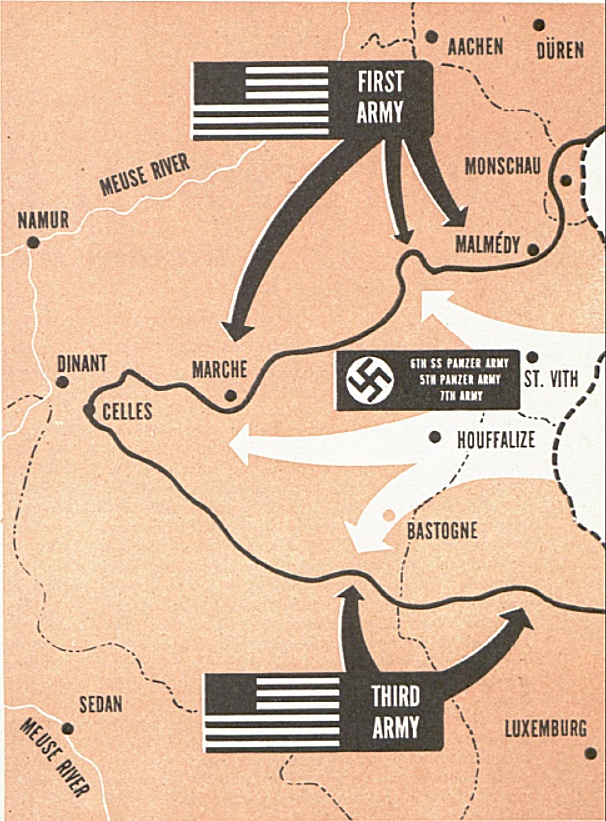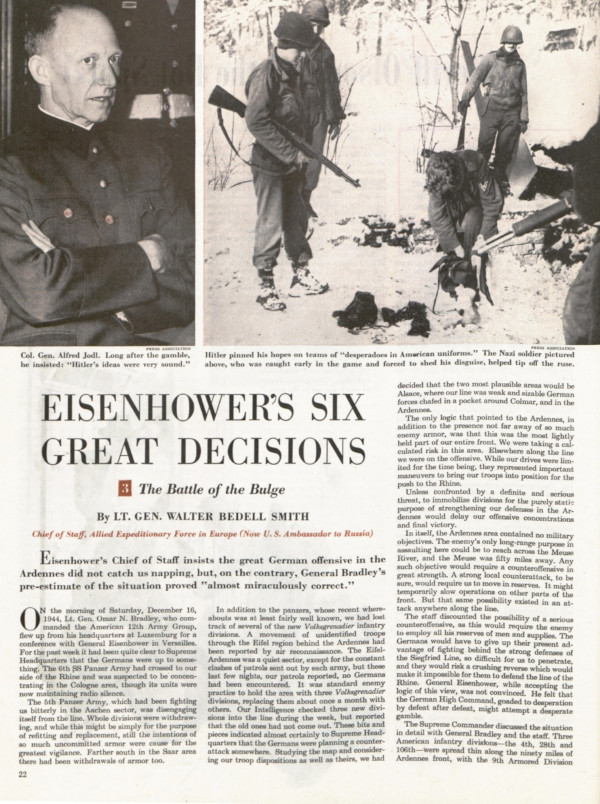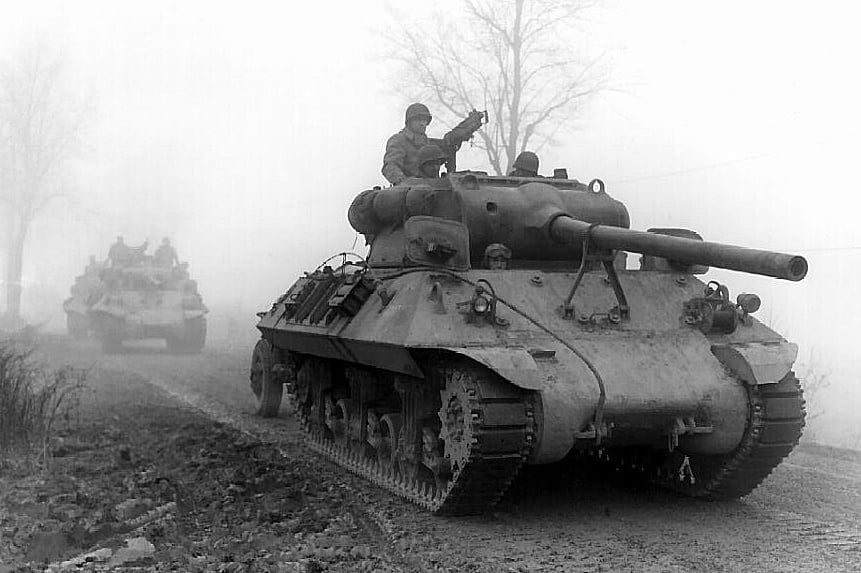It can be impossible to effectively analyze military strategy during the fog of war. It often only becomes clear what worked – or didn’t – years later.
After World War II ended, the Post tried to illuminate some of the most effective military strategies in Europe. Of course, General Dwight D. Eisenhower was responsible for many of them. In a series of articles, the Post, along with Lt. Gen. Walter Bedell Smith, chose six turning points during the War. In the June 22, 1946, issue, they profiled The Battle of the Bulge, the harrowing clash between the German army and the Allied forces. The surprise attack by the Germans in the Ardennes region resulted in the highest number of American casualties during the war, but was ultimately a turning point for the Allies.

In the Post article, Smith, who had been Eisenhower’s chief of staff during the War, offered his perspective on the battle. According to Smith, the Ardennes “was the most lightly held part of our entire front. We were taking a calculated risk in this area. Elsewhere along the line we were on the offensive.” While the Ardennes was not an obvious military target, Eisenhower was wary: “He felt that the German High Command, goaded to desperation by defeat after defeat, might attempt a desperate gamble.”
And that, of course, is exactly what the Germans did. The size and force of the German attack wasn’t clear at first, but Eisenhower didn’t waver. “Eisenhower decided to back his own judgment. He acted instantly and with the greatest vigor. This was no local counterattack, he decided, thinking of the unemployed panzer armies. Power would be needed,” Smith wrote.
Multiple Armored and Airborne Divisions were deployed to the Ardennes, and in record times. Within the week, 250,000 troops had been sent.
Smith also provided a glimpse into the German strategy for the battle. They had been planning it for months, an idea that was Hitler’s own. The plans were so secretive that even the division commanders didn’t know of their actual mission until the day before the battle commenced. They planned to attack in foul weather in order to thwart the Allied air forces. The tactic of waiting for the worst weather worked brilliantly in concealing their intentions, but it also proved to be the Germans’ undoing.
The Germans could not have picked terrain less suited to their purpose. The array of armor was certain evidence that they looked upon this campaign as blitzkrieg. But blitzkrieg, which depends on lightning swiftness, was impossible in the Ardennes mud and snow. Heavy tanks broke the thin crust of frost and their treads churned roads into bottomless mire, blocking the impatient battalions behind. Detours over even softer ground were impossible. These conditions and the heroic resistance of our advanced divisions thwarted the German drive during its first critical period.
With superior air power and relentless determination on the ground, the Americans, over the course of a month, eventually snuffed out the German attack. Smith wrote, “There in the snow and the mud, the American soldier proved himself invincible,” Smith wrote. Perhaps they were inspired by Gen. Eisenhower’s December 22, 1944, order of the day, which was released to all troops:
By rushing out from his fixed defenses the enemy may give us the chance to turn his great gamble into his worst defeat. So I call upon every man, of all the Allies, to rise now to new heights of courage, of resolution and of effort. Let everyone hold before him a single thought—to destroy the enemy on the ground, in the air, everywhere—to destroy him! United in this determination and with unshakable faith in the cause for which we fight, we will, with God’s help, go forward to our greatest victory.
Click on the link below to read “Eisenhower’s Six Great Decisions — 3: The Battle of the Bulge”
Members can read the entire series in our online archive. Issue dates are provided below. To become a member, subscribe to the magazine.
- “Eisenhower’s Six Great Decisions — 1: The Invasion Gamble” — June 8, 1946
- “Eisenhower’s Six Great Decisions — 2: Normandy Turning Point” — June 15, 1946
- “Eisenhower’s Six Great Decisions — 3: The Battle of the Bulge” — June 22, 1946
- “Eisenhower’s Six Great Decisions — 4: Victory West of the Rhine” — June 29, 1946
- “Eisenhower’s Six Great Decisions — 5: Encirclement of the Ruhr” — July 6, 1946
- “Eisenhower’s Six Great Decisions — 6: The Only Way It Could End” — July 13, 1946

Featured image: American tanks on December 20, 1944, near Werbomont, Belgium (Wikimedia Commons, public domain)
Become a Saturday Evening Post member and enjoy unlimited access. Subscribe now




Comments
I really can’t imagine General Eisenhower making the right decisions he did without God’s help assuring success that was not certain at all. He made very difficult, painful strategic decisions that only someone with his level of expertise could have successfully orchestrated. With anyone else other than Eisenhower, it could have been a disaster.